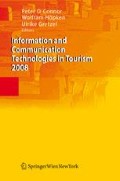Abstract
This paper introduces experiences with mobile positioning data in the web-based tourism management and monitoring system: “Positium Barometer”. The system has been developed for tourism enterprises, public authorities, scientists and planners to obtain statistical overviews and standardized analyses about the space-time movement of tourists. Positium Barometer uses passive mobile positioning data —location data that is stored automatically in the memory files (billing memory, hand-over logs etc) of mobile operators. Our database consists of records of the locations of roaming call activities in Estonia. Data is stored for every call activity of a foreign phone in Estonia. The data is anonymous, phone numbers and user data are not identified by mobile operators. LBS (Location Based Services) data is a new and promising source for studying the geography of tourism and space-time behaviour since the data is spatially more precise than questionnaires or accommodation statistics. The biggest problem of mobile positioning is fear of surveillance.
Preview
Unable to display preview. Download preview PDF.
References
Ahas, R., Aasa, A., Roose, A., Mark, Ü. & Silm, S. (2007a). Mobile positioning as a new data source and method for tourism surveys: an Estonian Case Study. Tourism Management (Published online June 2007) http://www.sciencedirect.com/science/journal/02615177. [Please refer to the PAPER publication]
Ahas, R., Aasa, A., Mark, Ü., Pae, T. & Kull, A. (2007b). Seasonal tourism spaces in Estonia: case study with mobile positioning data. Tourism Management 28(3): 898–910.
Ahas, R., Aasa, A., Silm, S. & Tiru, M. (2007c). Mobile positioning data in tourism studies and monitoring: case study in Tartu, Estonia. In M. Sigala, L. Mich and J. Murphy (Eds.), Springer Computer Science: Information and Communication Technologies in Tourism (pp. 119–128). Wien/New York, Springer.
Ahas, R. & Saluveer E. (2007). Concept of Smart Street: observing street life with passive mobile positioning data. IGU Commission on the Geography of Information Society, Digital Communities 2007. Tallinn, Estonia ∼ Helsinki, Finland, July 8–12, 2007. [Editor, publisher, place, pages?]
Ahas, R. & Mark, Ü. (2005). Location based services —new challenges for planning and public administration? Futures 37(6): 547–561.
Directive 95/46/EC of the European Parliament and of the Council of 24 October 1995 on the protection of individuals with regard to the processing of personal data and on the free movement of such data. http://eur-cx.curopa.eu/LcxUriScrv/LexUriServ. do?uri=CELEX:31995L0046:EN:HTML
Directive 2002/58/EC of the European Parliament and of the Council of 12 July 2002 concerning the processing of personal data and the protection of privacy in the electronic communications sector (Directive on privacy and electronic communications)http://eur-lex.europa.eu/LexUriServ/site/en/oj/2002/l_201/1_20120020731en00370 047.pdf
Eurobaromeeter 2007. http://ec.europa.eu/public_opinion/index_en.htm.
Gartner, G. (2004). From “Internet cartography” to “ubiquitous cartography”. Mitteilungen der osterreichischen geographischen gesellschaft 146: 303–322. [Clarify Volume / Issue in format 32 (2)]
Klinkenberg, B. (2007). Geospatial technologies and the geographies of hope and fear. Annals of the association of American Geographers 97(2): 350–360.
Mountain, D. & Raper, J. (2001). Positioning techniques for location-based services (LBS): characteristics and limitations of proposed solutions. Aslib proceedings 53(10): 404–412. [Editor, publisher, place of publication and pages omitted]
Ratti, C., Frenchman, D., Pulselli, R.M. & Williams, S. (2006). Mobile landscapes: Using location data from cell phones for urban analysis. Environment And Planning B-Planning & Design 33(5): 727–748.
Author information
Authors and Affiliations
Editor information
Editors and Affiliations
Rights and permissions
Copyright information
© 2008 Springer-Verlag Wien
About this paper
Cite this paper
Ahas, R., Saluveer, E., Tiru, M., Silm, S. (2008). Mobile Positioning Based Tourism Monitoring System: Positium Barometer. In: O’Connor, P., Höpken, W., Gretzel, U. (eds) Information and Communication Technologies in Tourism 2008. Springer, Vienna. https://doi.org/10.1007/978-3-211-77280-5_42
Download citation
DOI: https://doi.org/10.1007/978-3-211-77280-5_42
Publisher Name: Springer, Vienna
Print ISBN: 978-3-211-77279-9
Online ISBN: 978-3-211-77280-5

